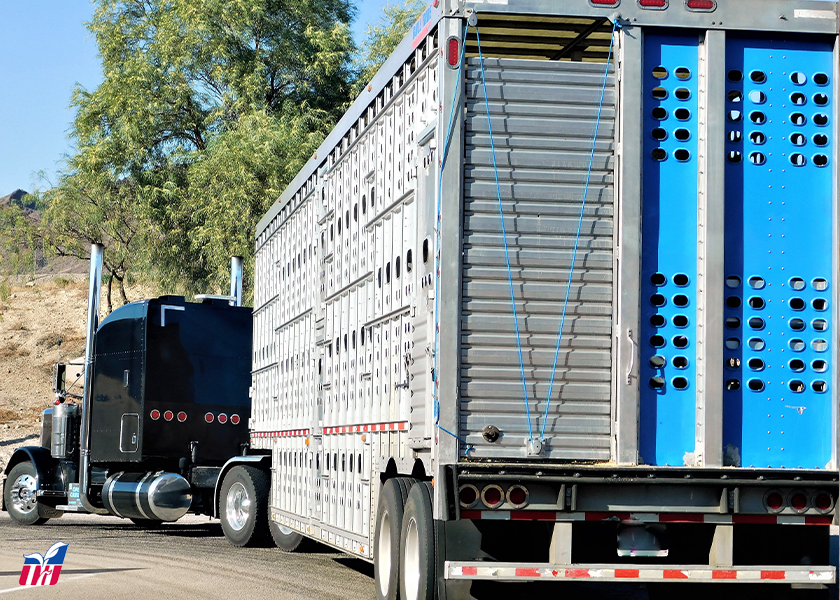Livestock Analysis | August 11, 2023

Price action: October lean hog futures rose $1.00 to $81.325 and nearer the session high after hitting a five-week low early on. For the week, October hogs lost $1.75.
5-day outlook: Despite today’s gains, the lean hog futures bears had the better week as the near-term technical posture significantly deteriorated. Key for the bulls next week will be defending today’s low of $79.65 in October hogs. If that level is breached the speculative sellers are likely to come out in force. The CME officially stated Wednesday’s cash hog index quote at $103.91, matching the 43-cent drop indicated by the preliminary calculation. Thursday’s preliminary figure tumbled another 85 cents to $103.06. The national direct five-day rolling average cash hog price quote today was $98.64. August lean hog futures expire Monday and will be cash settled Wednesday and traded almost $2.00 below the cash index at today’s close. The noon report showed pork cutout value gained 51 cents to $113.52, led by gains in hams and butts. Movement at midday was 178.15 loads.
30-day outlook: Late summer/early fall cash hog and pork market weakness is on the minds of traders at present. Still, hog/pork strength may persist in the coming weeks due to reduced retail costs to consumers and the likely positive impact upon their pork buying patterns. Grocers have been featuring pork more at the meat counter recently. Still, the end of BLT and grilling seasons along with typical increases in hog slaughter produce seasonal price declines in the coming weeks. The CME lean hog index peaked at $122.25 in August of 2022, with the subsequent declines carrying it down to $78.60 just after Christmas.
90-day outlook: USDA Thursday reported U.S. pork sales of 22,300 MT for 2023--up 25 percent from the previous week and up 3 percent from the prior 4-week average. Exports of 26,800 MT were down 1 percent from the previous week, but up 12 percent from the prior 4-week average. U.S. pork sales need to continue to improve to give producers hope hog and pork prices can sustain uptrends in the coming months. The recent appreciation of the U.S. dollar on the foreign exchange market will not help U.S. pork sales abroad. Also worrisome is recent downbeat economic data from China that could further restrict U.S. pork sales to that nation.
What to do: Get current with feed advice. Carry all production risk in the cash market for now.
Hedgers: Carry all risk in the cash market for now.
Feed needs: You should have all soymeal and corn-for-feed needs covered in the cash market through mid-August.
Price action: Bears apparently remain skeptical about the short-term cattle outlook, with the expiring August live cattle futures falling 72.5 cents to $180.375 today despite sustained cash strength. Most-active October cattle dropped $1.20 to $181.325 on the day, with the closing price marking a weekly decline of $1.575. October feeder futures slid 45 cents to end the week at $252.875, which represented a weekly drop of $2.55.
5-day outlook: This week’s light cash trading yielded a Monday-Thursday average for fed steers in the five-market area at $188.41, which if sustained through today’s trading (as it probably will), would mark the second-highest weekly figure on record (following only the average for the first week of June at $188.75). Wholesale prices remained firm at midsession, with choice cutout rising 61 cents to $302.65 and select values slipping 60 cents to $277.20. The underlying strength behind the cash and wholesale markets seems highly unlikely to decline next week, so, given the discount built into August futures, bears are apparently anticipating major losses in late August. That pessimism doesn’t seem justified.
30-day outlook: Grocers will probably have met the bulk of their needs for planned Labor Day features by August 23, at which point a seasonal downturn might commence. Consumers and grocers will likely begin shifting their focus away from steaks toward cheaper roasts with the grilling season ending and the school year starting. However, the late summer-early fall decline isn’t usually all that substantial; the 10-year average implies a drop of about $6.00 from an early-August high to a mid-October low. August live cattle futures imply a larger drop over the next three weeks, whereas October futures suggest a slight advance during September and October. A more traditional decline seems more probable, especially with rising retail beef prices beginning to crimp consumer demand.
90-day outlook: Although the Bureau of Labor Statistics indicated a 0.1% annual drop in July retail beef prices, those for steaks, roasts and hamburgers posted annualized gains of 9.5%, 6.8% and 2.0%, respectively. Unfortunately, we expect much more of the same during the coming weeks and months, particularly if fed cattle prices don’t decline substantially from current levels. Tight cattle and beef supplies would likely limit the market’s downside through fall, but the elevated consumer prices and their negative reaction could take a toll on the market further down the road. That could prove particularly true if reduced feed costs and sizeable premiums in winter and spring fed cattle cause feedyard managers to accelerate yearling placements and curtail marketings this fall.
What to do: Get current with feed advice. Carry all production risk in the cash market for now.
Hedgers: Carry all risk in the cash market for now.
Feed needs: You should have all soymeal and corn-for-feed needs covered in the cash market through mid-August.






